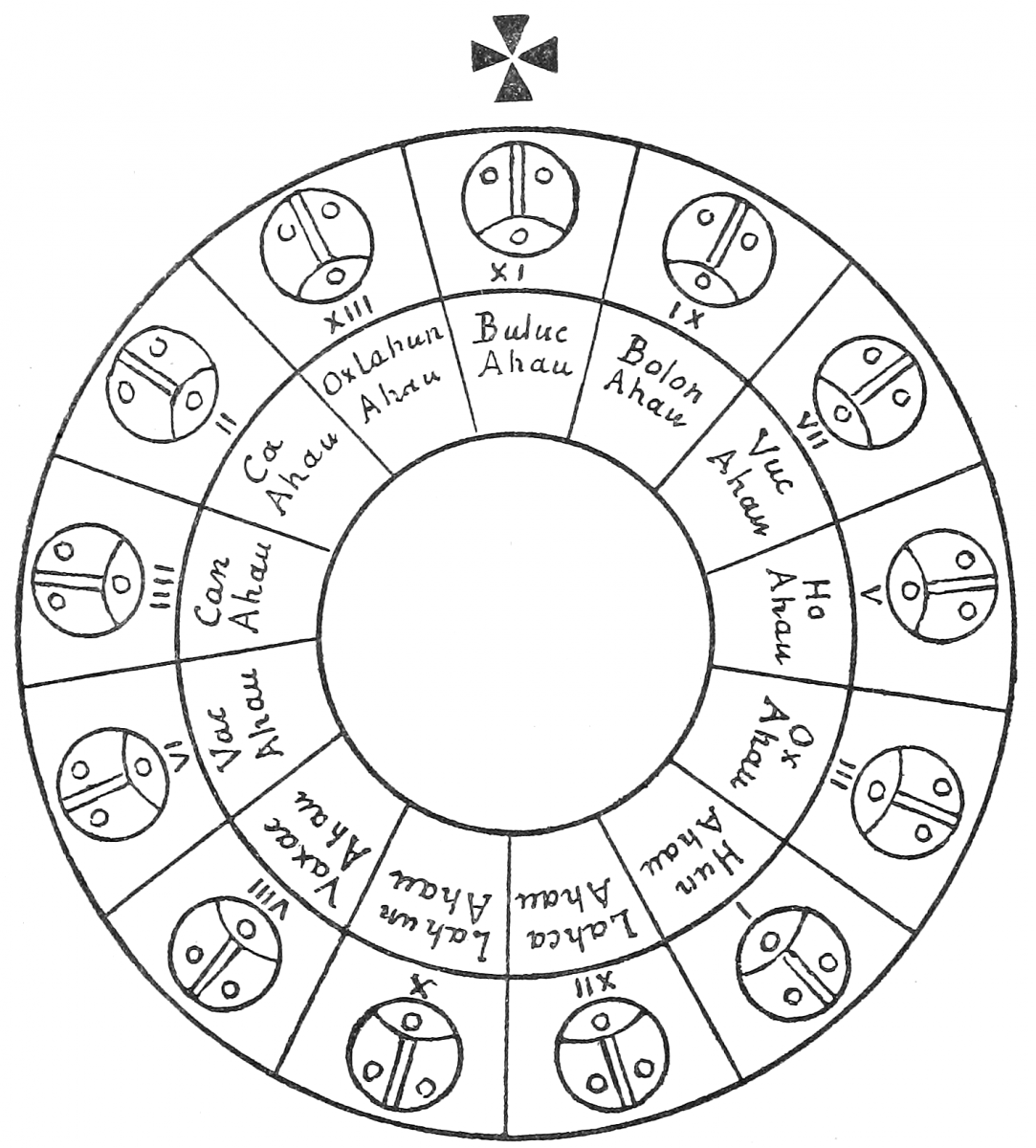- About MAA
- Membership
- MAA Publications
- Periodicals
- Blogs
- MAA Book Series
- MAA Press (an imprint of the AMS)
- MAA Notes
- MAA Reviews
- Mathematical Communication
- Information for Libraries
- Author Resources
- Advertise with MAA
- Meetings
- Competitions
- Programs
- Communities
- MAA Sections
- SIGMAA
- MAA Connect
- Students
- MAA Awards
- Awards Booklets
- Writing Awards
- Teaching Awards
- Service Awards
- Research Awards
- Lecture Awards
- Putnam Competition Individual and Team Winners
- D. E. Shaw Group AMC 8 Awards & Certificates
- Maryam Mirzakhani AMC 10 A Awards & Certificates
- Two Sigma AMC 10 B Awards & Certificates
- Jane Street AMC 12 A Awards & Certificates
- Akamai AMC 12 B Awards & Certificates
- High School Teachers
- News
You are here
Maya Cycles of Time: Later Dating Schemes
In the Late Classic era, Long Count dating passed out of use in favor of an abbreviated system for commemorating the end of a katun or 7,200-day period. A Long Count katun-ending date of
9.16.0.0.0 2 Ahau 13 Tzec
was reduced to
Katun 16 2 Ahau 13 Tzec.
The loss of specificity is not as great as it seems because of the redundancy inherent in the dating system. A given period-ending date is exact within a cycle of nearly 19,000 years, a time period well in excess of the 13-baktun Great Cycle of 5,128 years.
Unfortunately, by the Late Post Classic (900–1500 CE) era, well before the arrival of the Spanish, another abbreviation for katun endings reduced the accuracy to within the much smaller period of 260 years. This method, dubbed the Short Count, suppressed all katun-ending references except the Tzolkin day. The katun-ending date above,
9.16.0.0.0 2 Ahau 13 Tzec,
was reduced to
Katun 2 Ahau.
It is indistinguishable from
10.9.0.0.0 2 Ahau 13 Mac,
some 256 Gregorian years later.
The table below shows how a particular date might appear. Note the variation in codex and stela glyph style. There is significant variation in styles among various archeological sites and even on the same site at different times. This makes general decipherment particularly challenging.
9.16.0.0.0 2 Ahau 13 Tzec

Katuns must end on an Ahau day because the first katun did and each Ahau day reoccurs every 20 days. The 13 day numbers, however, are not sequential for katun endings. The length of a katun in days, 7,200, is 11 or –2 (mod 13). Thus successive katun-ending Ahau days are 13 Ahau, 11 Ahau, . . ., 1 Ahau, 12 Ahau, 10 Ahau, . . . These dates, arranged in a wheel, constituted the prevailing calendar at the time of the Spanish Conquest. In Figure 9 is de Landa’s version of the Maya calendar.

Figure 9. De Landa's sketch of the Round of the Katuns. Wikimedia Commons.
The Short Count is a major reason for the unresolved problem of correlating the Maya and European calendars. Short Count dates are correlated to European dates; the problem is correlating prevailing Short Count with ancient Long Count dates. The generally accepted correlation places the Long Count katun ending of
11.16.0.0.0 13 Ahau 8 Xul
on the Gregorian date of November 12, 1539.
Sandra Monteferrante (Dowling College), "Maya Cycles of Time: Later Dating Schemes," Convergence (July 2012), DOI:10.4169/loci003886




